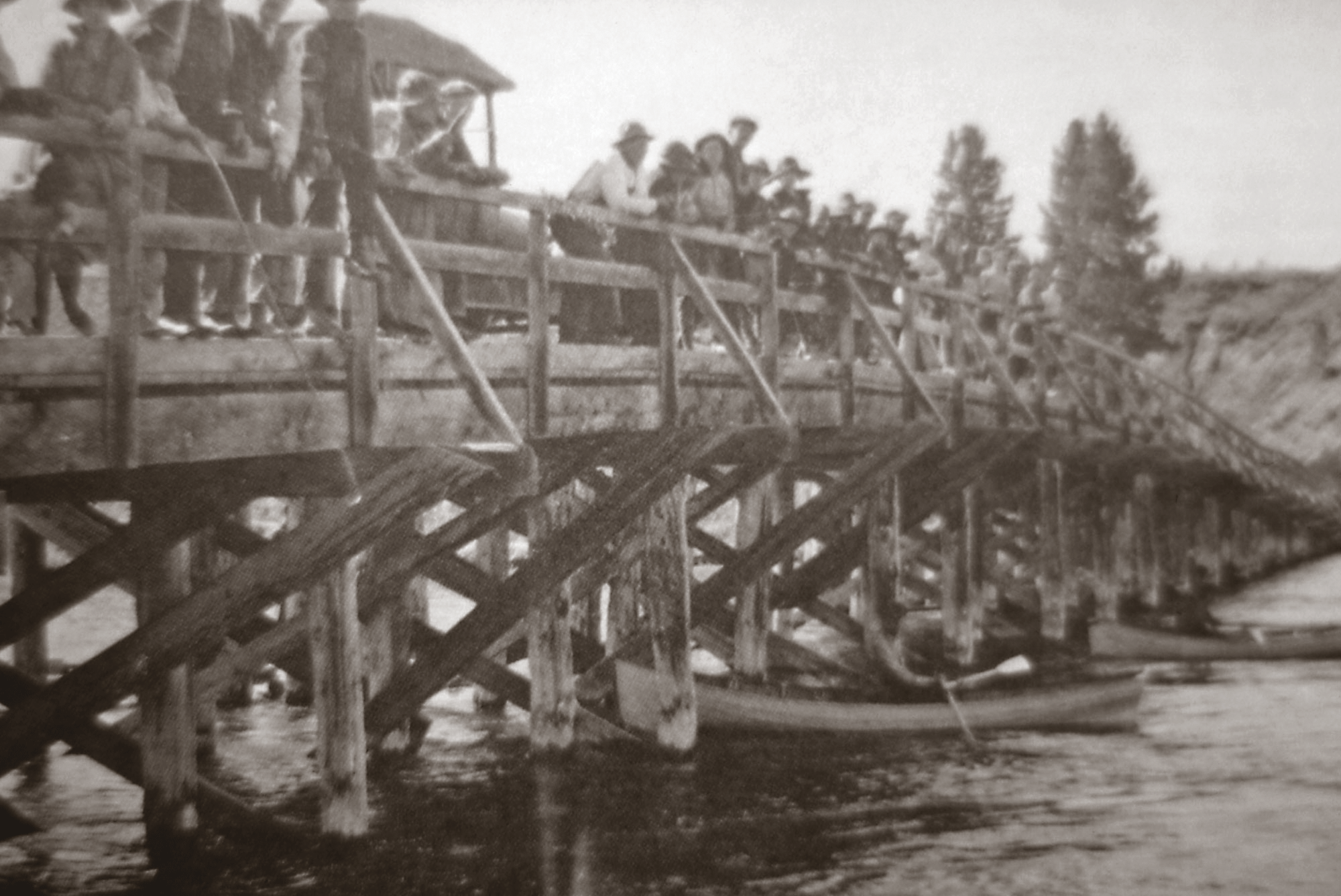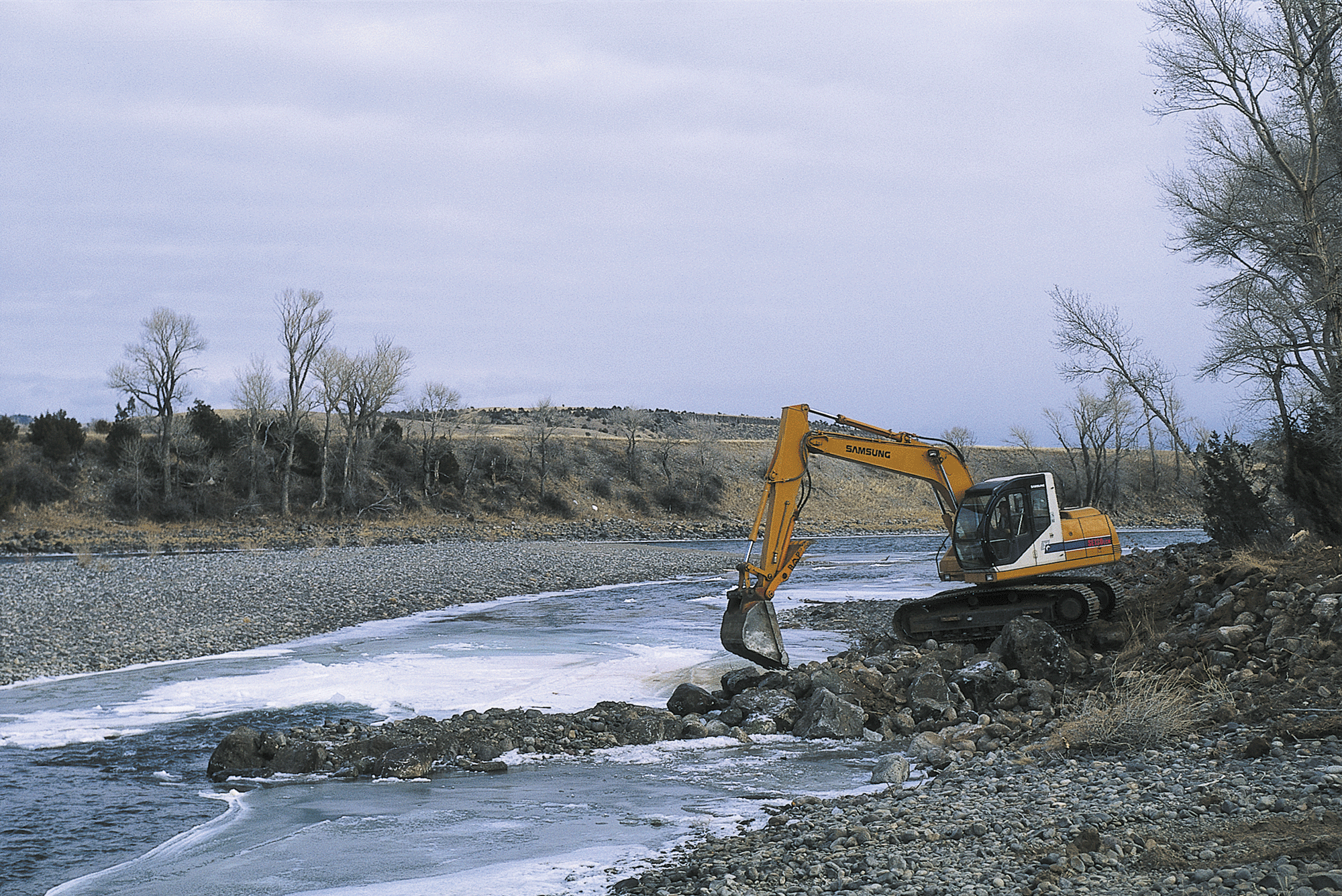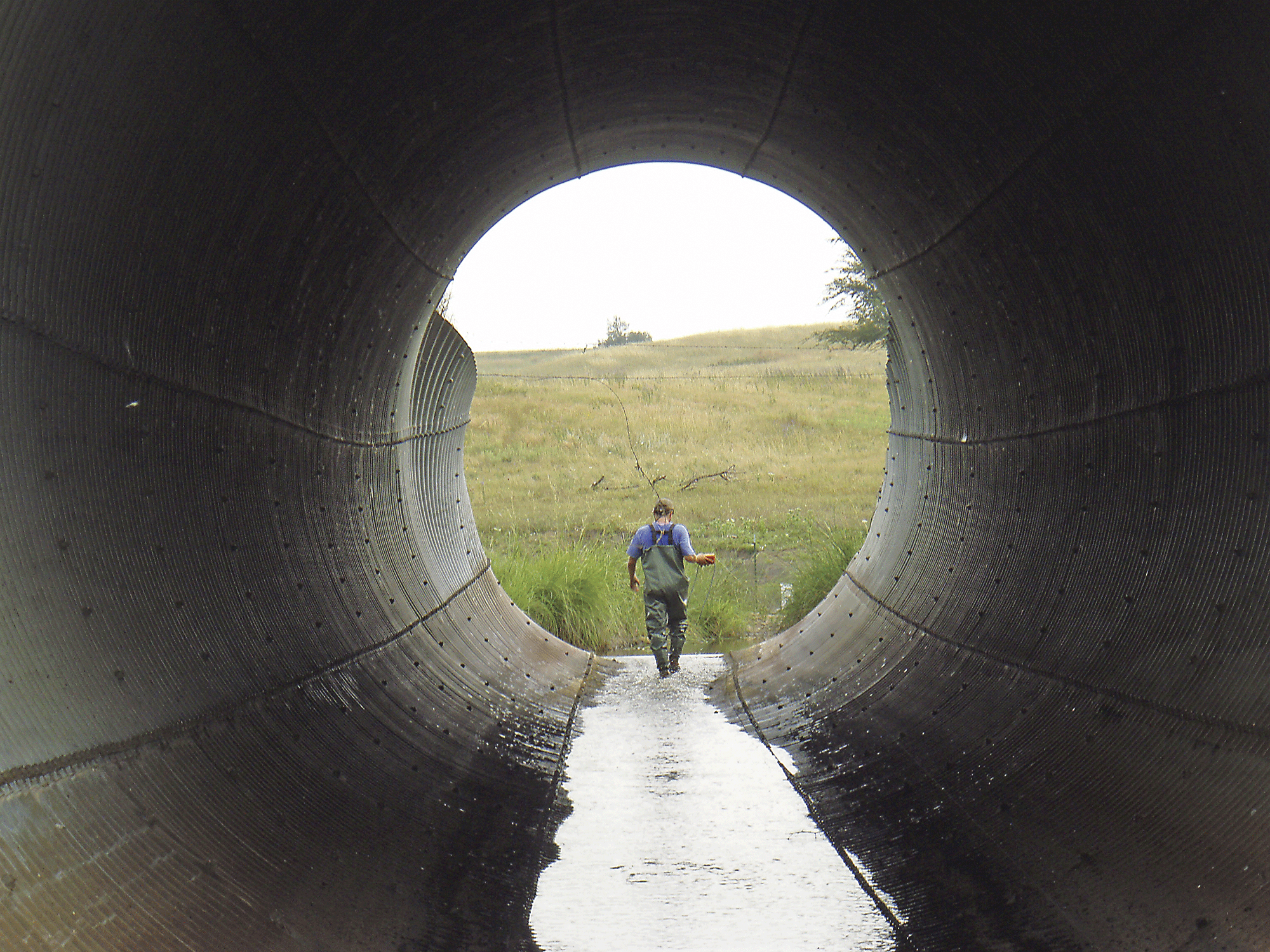
17 Oct Silent Crisis
IN 1924, THE YELLOWSTONE CUTTHROAT was in the midst of a silent crisis. The National Park Service couldn’t figure out why angler creel counts at the legendary Fishing Bridge, near the outlet of Yellowstone Lake, were light. Fewer and fewer bonanza days and saggy stringers, like all those great Union Pacific pamphlets and Eastern magazines portrayed, confused rangers and fish commissioners. Park waters were well stocked. How could visitors not be catching fish?
One possibility was a parasite that made the Yellowstone cutthroat in their eponymous lake wormy. Diphyllobothrium cordiceps caused the flesh to go soft and skin to boil. How the fish contracted it was unknown, but it wasn’t unusual for rangers to get reports. With the trend in poor fishing, however, one idea floated through the ranks of the Park Service suggesting the white pelican’s proximity to the fish in the lake — those birds consumed 6,000 cutthroat a day — could be the culprit of the parasite and source of diminishing returns on stocking.
Harry J. Liek, assistant chief ranger, and a few other park employees formulated an unofficial but practical plan to address the situation: kill the pelicans and their young. They shot roughly seven-dozen pelicans (and some mergansers), boot-stomped over 440 eggs and young, and generally disrupted nesting for a few seasons. This grisly practice was a turning point for national parks.
Outcry for the protection of the white pelican turned the silent crisis into a public relations nightmare, foretelling a shift in wildlife management toward the protection of native species and eventually leading to the preference for cutthroat over non-native rainbow and browns in the stocking program. Park managers also roundly agreed future decisions should be based on scientific study, not conventional wisdom, paving the way for an ecologically-minded National Park Service. Ben Thompson, a new-school “biologist” during this paradigm shift, conducted the first study looking at the relationship between pelicans and cutthroat. In 1931, he concluded the problem lay not between pelicans, cutthroat and parasitic worms. The cutthroat crisis was entirely manufactured by humans.
Seventy-seven years later, human understanding of nature is exponentially better, and our behavior toward it has even improved, judging from the lack of newer model cars pushed over the banks and old paint cans ending up in the river. Wild fish have widely replaced hatchery stocks, at least in Montana, and natives like the cutthroat (Oncorhynchus clarki) are increasingly taking precedence over non-natives. Wiser, tougher regulations and a pervasive catch-and-release ethic has made over-fishing a practice of the past — at least inland — and the importance of habitat preservation and restoration are at the forefront of conservation efforts. This is all evidence of positive social evolution since the days of egg stomping. But still, the cutthroat trout is in a state of crisis.
In the last century, two of the 14 cutthroat subspecies became extinct, the Yellowfin and the Alvord, and three others are listed as threatened under the Endangered Species Act: the Paiute, Greenback and Lahontan. Two more minor subspecies of the Lahontan group, by extension, are included in the Lahontan’s ESA listing, the Humboldt and Whitehorse Basin cutthroat, making half of the subspecies of cutthroat threatened or dead.
The remaining seven, most notably the major subspecies, Coastal, Yellowstone and Westslope, are faring poor to relatively stable. All have small, isolated populations that are considered healthy; compared to historic range, hardly any are considered robust. Overall populations of Coastal cutthroat — today the most widely distributed of the subspecies — in northern California, Oregon, and Washington warranted petitions seeking endangered species status in the late 90s, but after a two-year status review, the US Fish and Wildlife Service controversially withdrew the petition in 2002. Despite finding populations “likely at lower-than-historic levels,” the agency actually discovered more populations and wider distribution than previously recorded. In reality, it wasn’t that there was a surge in populations or recovery in historic waters; it was the first time a comprehensive study on the species had been conducted and “isolets” were found.
A similar thing happened in Montana and Idaho. A host of agencies and biologists conducted separate status assessments of the Yellowstone and Westslope cutthroat trout, known to be struggling with hybridization and competition with non-natives, water diversions, and loss of habitat. The studies didn’t disprove that familiar struggle either, but, in both cases, biologists employing cutting-edge tools like GIS found undocumented genetically pure populations. This increased the number of conservation populations of Yellowstone cutthroat in historic habitat by nearly 100 percent. While a sigh of relief was breathed for that subspecies, not far away the Westslope, historically the most widely distributed cutthroat, was assessed at occupying about half of its native range. Of this habitat, genetically pure Westslope occupy perhaps as little as 13 percent, and hybridization with rainbow trout is reaching critical levels. Many were disappointed when the USFWS rejected an ESA petition, coinciding with the Coastal cutthroat withdrawal, but breathed new life into conservation efforts directed at habitat restoration and eradicating non-native species in sensitive waters.
Modern day experts have pinpointed culprits with considerably better science under their belts than fish culturalists of the 1920s. Robert J. Behnke, perhaps the most reputed fisheries biologist with regard to trout, says that non-native invasive species are the “bottom line” threat. Matt Blank, a hydrologist specializing in the new field of “road ecology” studying fish passageways and habitat connectivity, would add that there are about 2.5 million aquatic barriers (culverts, dams and canals) in U.S. waterways. Such barriers are detrimental to the health of the relatively fragile cutthroat, blocking spawning runs, disconnecting habitat, and streamlining flows. Sarah Haque, a fisheries biologist with the Squaxin Island Tribe in Washington, says near-shore habitat degradation and poor water quality are the biggest threats to diminishing populations of sea-run cutthroat.
When I asked Patrick Byorth, a veteran fisheries biologist formerly with the Montana Fish, Wildlife and Parks, and also my brother, if these factors were commensurate with his studies of Montana’s native Arctic grayling and Yellowstone cutthroat, his answer resounded Ben Thompson’s 1931 conclusion.
“Why not just point the finger at humans?” he asked. “Humans planted non-natives, built dams, graze cattle in riparian zones, dewater streams for irrigation, and created every unfavorable condition that exists for natives,” he said. “Non-natives are often just the easiest to blame because there are no social implications or class distinctions when you point the finger at them.”
The cutthroat “crisis” is, yet again, human or “anthropogenic.” But biologists and associated experts have a bit more understanding going for them than when early resource managers adopted biological study. Yet, considering recent discoveries of unknown populations, furthering human understanding and altering human behavior must be perpetual.
In the wide-view of fisheries, it is roundly agreed that habitat is the baseline for cutthroat survival. Without spawning habitat, propagation is a losing proposition. Without structural protection of flourishing riparian zones and healthy streambeds, food sources likely diminish, predation increases and water temperatures rise. And, without the coldest, freshest water in North America, cutthroats are the first in the aquatic ecosystem to go belly up. Human settlement is the greatest contributor to habitat destruction, and the most ubiquitous expression of settlement is the construction of roads.
Take notice of your waterways next time you leave home, and it is likely your day-to-day intimacy with them is from a road. Roads frame nearly every square mile of farming-dominated countryside, traverse impossible topography in ranchland, and zigzag our mountainsides in the spirit of Manifest Destiny. To the credit and legacy of American civil engineers, there are few places on earth they can’t build roads. And, where there are roads, there are road crossings.
According to Matt Blank, there are 1.4 million road crossings on American waterways. Not all of these crossings are fish barriers, he’ll quickly point out, but many disrupt continuous native habitat to some extent, affecting fish. In Oregon and Washington, for example, there are over 10,000 culverts on fish-bearing streams on federal lands; 2,600 of them are barriers restricting fish movement. In some cases, barriers incidentally protect pure strains of cutthroat from invasive non-natives. This is sheer luck, because in most cases they block fish from spawning grounds and restrict natural movement. Given the number of road crossings across the country, nobody knows how many are barriers and how many are fish passageways.
Ecological “connectivity” is Blank’s area of study as a research hydrologist for the Western Transportation Institute, which is associated with Montana State University’s College of Engineering. Looking at how interruptions affect fish populations and movement, and how road engineers and landowners can improve aquatic habitats through the better design of road crossings, Blank is trying to connect divided aquatic ecosystems. Technically, he is an engineer, a mathematician, who has been trained to study the movement of water. But he also happens to be a very accomplished outdoorsman and fly fisherman. His vocation and avocation combine to make his understanding of rivers and fish extensive. In his tenure as a student, he could see an obvious conflict withv the conventional wisdom of his profession and his love and understanding of fish and rivers. This conflict stirred not trouble for Blank, but opportunity.
“I was a little tired of engineers battling biologists who were making responsible scientific arguments on behalf of fish, and I was sick of biologists battling engineers who know how to build stuff.”
So Blank married them into what is being called “road ecology.” As road studies in the past were case-by-case, stream-by-stream, culvert-by-culvert, Blank envisions a larger scope of study, taking into account all the bodies of water in a given watershed and evaluating all possible fish barriers in order to better understand how a given population of fish was thriving or merely surviving. This was an engineer thinking like a biologist.
“There are still old-school engineers who focus stream-by-stream on the means of flow only — what we call hydraulic design. But, now there is a younger generation of engineers getting out into the field with new perspectives on the ecological factors of our work. And the thing is, we are the generation who is beginning to teach entry-level engineering and hydrology courses.”
Indeed, MSU-Engineering will offer the first degree in road ecology in the country, promoting a better understanding of ecology among engineers and a better understanding of engineering to ecologists. This is a good thing as some states still have little mention of “fish passageways” in their state design and engineering codebooks, and “road ecology” is a relatively unknown term to both state and transportation departments.
“Connectivity is on the minds of federal managers,” Blank says, “and on a much more limited scale in the minds of state managers. Virtually, it is nonexistent in the private sector — especially in the minds of developers.”
This has not boded well for the cutthroat. The design life on road structures can be up to 75 years or more, meaning that a culvert dropped in the ground today could be in place until 2083. The cutthroats native to that stream may not, and probably won’t, make it that long when a cutthroat-friendly culvert could be put in place.
“Retrofitting or removing then become the only option,” Blank says. “It’s happening, but it’s going to take generations to accept this ecological mindset as an engineering ethic. I’d consider my career a success if we can convince landowners not to just drop in any old culvert laying around the property into a stream. The cost may be more to install a fish-friendly crossing in the short-term, but the value you get out of it is native fish. What’s that worth when you go to sell?”
Sarah Haque has also run into her share of anthropogenic influences in her work tracking sea-run cutthroat in the southern inlets of Puget Sound. Nearshore habitat degradation, such as shoreline armoring and removal of vegetation, are common as the waterfront is developed. Many new landowners protective of their shoreline and views go to great length to stop erosion and shape the landscape for views. But they can do themselves, and native species, a favor.
“The effect is actually the opposite,” Haque says. “Concrete walls, rip-rap and bank armoring cause erosion and disconnect upland and marine environments.”
What happens is that bulkheads — sea walls — prevent the natural dissipation of water’s energy, pushing energy down and digging out the shore underneath — not unlike the way a waterfall creates plunge pools. Sea-run cutthroat rely heavily on shallow water benthic communities, which are ultimately displaced or lost. Subsequent separation of inland and marine environments then starves beaches of nutrients and disturbs littoral processes as currents push and pull sediment. Impeding these processes denigrates the very health of the environment that likely made the real estate attractive in the first place.
Unlike the increasingly popular trend of habitat restoration projects inland, say, in Nevada, Idaho or Montana, it is only starting to make headway in the Puget Sound. Haque points out the number of people who aren’t aware of the effect their shorelines have on overall ecological health. “It is amazing how many people I have come into contact with that weren’t even aware that there was a sea-run form of cutthroat trout,” Haque says. “Good management practices and stewardship can really only persevere through knowledge and education. I truly believe that the more informed people are, even simply on the existence of this life history form, the better.”
The one thing that must be said for the state of the cutthroat trout is that 12 of 14 subspecies aren’t dead yet. The Bonneville, Lahontan and Greenback are all rebounding to some extent, and conservation efforts are building steam to save the Paiute, Westslope and Rio Grande. Recently, 18 groups of varying — and sometimes diverging — special interests signed an agreement to support restoration of Montana’s ailing Westslope and slightly healthier Yellowstone cutthroats. While the agreement calls for 50 conservation projects a year, the real victory may just be the fact that a wide group of people chose to modify their behavior toward the native species.
Such a decision can bring amazing results. In the late 1980s, Byorth studied spawning success of Yellowstone cutthroat in tributaries of the Yellowstone River. Some go bone dry after runoff due to irrigation for hayfields. Since the cutthroat spawn before runoff, much of the roe was exposed to the sun and basically baked. In Big Creek, for example, a tributary in the middle of Paradise Valley, Byorth counted 12 redds and, literally, a few fry were able to emerge and, hence, hold the possibility to return and spawn. Alternative water sources were sought out to keep water in the stream in subsequent years, and, by the time he returned as the Yellowstone restoration biologist in 2003, there were between 90 and 140 redds and a population of 18,000 fry in the stream. Maybe only 10 percent survive, but the stream is well on its way to finding its carrying capacity. What was the point of recovery for this mini-crisis? When the landowner agreed in the effort.
“There is a high degree of doom-and-gloom when it comes to native species,” Byorth told me. “I say B.S. to the woe-is-me doom and gloomers. We can restore native species. We can turn back the tide. We can put water back in our streams. We can restore spawning grounds. And it all depends on people. Having the public on board with landowners is crucial because if they don’t care it is hard to make the political side care.”
Shrinking range and populations of native cutthroats, hybridization with non-natives, and destruction of habitat across Western North America often blur the small victories and possibilities for redemption. It must be remembered that the cutthroat has been here for perhaps 2 million years, and it is capable of change, but slow change. Its biogeography and diversity make for a complex set of situations that beg for further understanding and adjustment to our behavior. The first step is simply to care.
- Photo by Jeff Henry
- Photo by Jeff Erickson
- Photo by Jeff Henry
- Photo by Matt Blank








No Comments